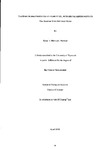The insecticidal properties of a garlic oil, with special reference to its use against two dipteran pests
| dc.contributor.author | Prowse, Gareth Michael | |
| dc.contributor.other | Faculty of Science and Engineering | en_US |
| dc.date.accessioned | 2013-10-24T13:29:30Z | |
| dc.date.available | 2013-10-24T13:29:30Z | |
| dc.date.issued | 2003 | |
| dc.identifier | NOT AVAILABLE | en_US |
| dc.identifier.uri | http://hdl.handle.net/10026.1/2358 | |
| dc.description | Merged with duplicate record 10026.1/672 on 12.04.2017 by CS (TIS) | |
| dc.description.abstract |
The potential for a quantitatively produced garlic oil for use as an insecticide was investigated. The study assessed the garlic oils efficacy in the laboratory and in the field, as well as its physiological effect on three key enzymes noted for their involvement either in toxicity, or detoxication of exogenous toxins in two Dipteran pests; Delia radicum (L.) and Musca domestica (L.). The garlic oil absorbed onto wood flour pellets (prills) had no significant repellent effect on D. radicum, in choice tests when presented with artificial oviposition sites. Exposure of 24hr old D. radicum eggs to garlic prills placed on the substrate significantly reduced egg hatch, whilst exposure to vapours of the prills had no significant effect. When used in the field, damage to swede plant roots by D. radicum was reduced in a dose dependent fashion, with the highest application rate (140 kg haˉ¹) providing control comparable to that of the 'current best practice' organophosphorus pesticide. In liquid form the garlic oil had a dose dependent effect on the mortality of all life stages (egg, 2nd instar larvae, and adult) of D. radicum and Al. domestica, and corresponding LC50, values were calculated. A 5% concentration had comparable mortality rates to the 'current best practice' organophosphorus pesticide. Field application reduced swede root damage in a concentration dependent fashion with mean root damage scores in the 0.5% and 2% concentration treatment plots significantly lower than those of the control, but not significantly different to those in the organophosphorus pesticide treatments. The liquid had no significant effect on swede root circumference at any concentration, thus not significantly affecting potential crop yield. Exposure of pure extracts of acetylcholinesterase, carboxylesterase, and glutathione S-transferase to a series of garlic oil concentrations inhibited carboxylesterase activity and glutathione S-transferase activity in a dose dependent fashion; no significant inhibition of acetylcholinesterase activity was noted. No significant inhibit ion of the three enzymes studied was noted In vitro or in vivo exposure of larvae and adults of both Dipteran species. Quantitative assessment of the glutathione and lactate pools indicated that there was generally a net loss of glutathione with increasing garlic oil concentration and no significant correlation between lactate levels and concentration in the larval and adult life-stages of D. radicum and M. domestica. It was concluded that the garlic oil studied, both in liquid form and in prill form could be used as an insecticide against the two Dipteran pests studied, although the mode of action is still unclear. Implications for use of the products and the potential mode of action are discussed. | en_US |
| dc.description.sponsorship | ECOspray® Ltd | en_US |
| dc.language.iso | en | en_US |
| dc.publisher | University of Plymouth | en_US |
| dc.title | The insecticidal properties of a garlic oil, with special reference to its use against two dipteran pests | en_US |
| dc.type | Thesis | |
| dc.identifier.doi | http://dx.doi.org/10.24382/3461 |
Files in this item
This item appears in the following Collection(s)
-
01 Research Theses Main Collection
Research Theses Main


